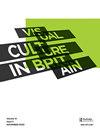A Complex Art of Logistics
Q2 Arts and Humanities
引用次数: 1
Abstract
This article considers the nature of creative work in UK art institutions through the analysis of three distinctive artistic projects: the 1951 Festival of Britain, Artist Placement Group (APG) (1966 – c. 1980) and the Arts and Crafts Movement (c. 1860–1900). Within each example, I first offer a critical reading of their recent appropriation, thus demonstrating the limits of the cultural institutions in which they are enlisted. Second, I consider which aspects have been undervalued in these revivals. In each instance, the combination of these two readings provides provocative possibilities for reviewing current understandings of creative work and collaboration in the public cultural institution.复杂的物流艺术
本文通过对1951年英国艺术节、艺术家安置小组(APG)(1966–1980年)和工艺美术运动(1860–1900年)这三个独特的艺术项目的分析,思考了英国艺术机构创造性工作的性质。在每一个例子中,我首先对他们最近的挪用进行了批判性的解读,从而展示了他们所参与的文化机构的局限性。其次,我认为在这些复兴中,哪些方面被低估了。在每一种情况下,这两种解读的结合都为回顾当前对公共文化机构中创造性工作和合作的理解提供了挑衅性的可能性。
本文章由计算机程序翻译,如有差异,请以英文原文为准。
求助全文
约1分钟内获得全文
求助全文
来源期刊

Visual Culture in Britain
Arts and Humanities-Visual Arts and Performing Arts
CiteScore
0.60
自引率
0.00%
发文量
1
 求助内容:
求助内容: 应助结果提醒方式:
应助结果提醒方式:


